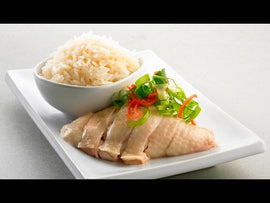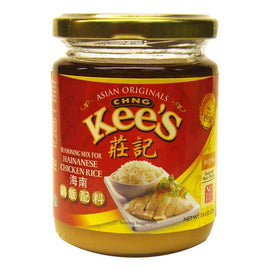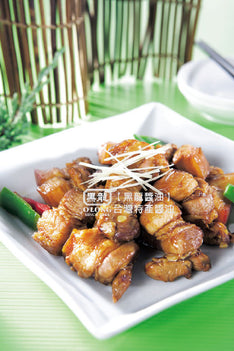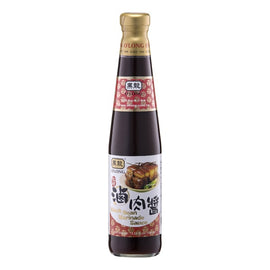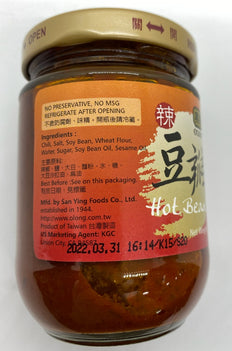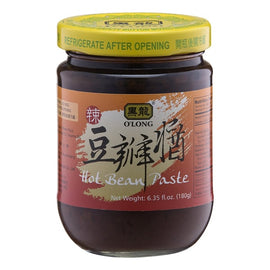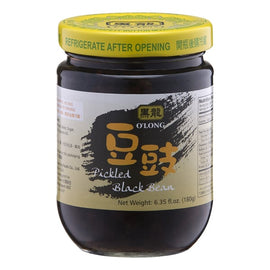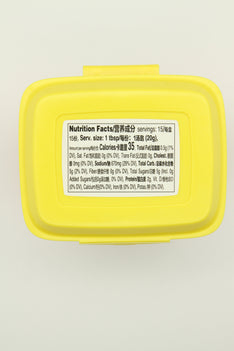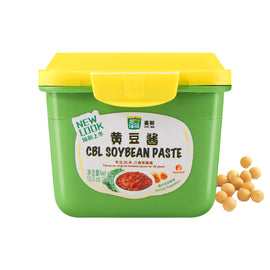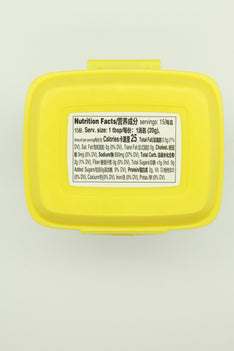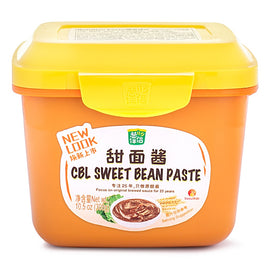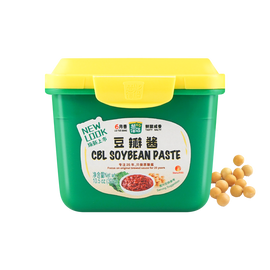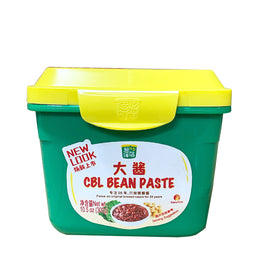Product successfully added to your shopping cart

PASTE
The Secret Weapon: Unlocking the Power of Bean Paste in Your Kitchen
Tucked away in tubs in the refrigerated section of international markets or in jars in your local supermarket aisle lies one of cooking's most powerful secret weapons: bean paste. Far more than a single ingredient, "bean paste" is a family of savory, salty, and often fermented wonders that can transform a dish from bland to complex with just a single spoonful.
If you've ever wondered what to do with that tub of miso or that jar of fermented bean paste, you're in for a treat. Let's explore the world of bean paste and discover how to harness its umami-rich magic in your cooking.
First, What Exactly is Bean Paste?
At its core, bean paste is made from cooked and fermented soybeans (and sometimes other beans or grains). The process, often involving salt and specific molds or yeasts, breaks down the beans, creating deep, savory, and complex flavors. The main types you'll encounter are:
-
Miso (Japan): A quintessential Japanese staple made from soybeans and koji (a fermentation culture). It comes in a spectrum of colors and flavors, from the mild, sweet Shiro Miso (White Miso) to the robust, salty Aka Miso (Red Miso).
-
Doujiang (China): Often sold as "Fermented Bean Paste" or "Yellow Bean Paste," this is saltier and chunkier than miso. Doubanjiang (Chili Bean Paste), especially the Pixian variety, is the fiery, fermented heart of Sichuan cuisine.
-
Doenjang (Korea): The hearty, pungent cousin to miso, Doenjang is a foundational flavor in Korean cooking, known for its powerful umami and use in soups and stews.
-
Sweet Red Bean Paste (Anko): Made from adzuki beans and sugar, this is a sweet paste used in East Asian desserts, from mochi to pastries.
For this guide, we'll focus on the savory, fermented pastes that are used as seasonings.
The Culinary Superpowers of Bean Paste: What to Use It For
Think of bean paste as a concentrated shot of savory depth. It's your shortcut to a rich, complex flavor base that would otherwise take hours to develop.
1. The Ultimate Foundation for Soups and Stews
This is bean paste's most famous role. A spoonful dissolved in your cooking liquid provides an instant flavor foundation.
-
Miso Soup: The classic. Whisk white or red miso into a dashi-based broth for the ultimate comforting soup.
-
Hearty Stews: Stir a tablespoon of Doenjang or Doujiang into beef, chicken, or vegetable stews. It adds a savory depth that complements the other ingredients without overpowering them.
-
Korean Doenjang Jjigae: A robust, fermented soybean paste stew with vegetables, tofu, and seafood or meat.
2. Create Incredible Marinades and Glazes
The natural glutamates in fermented bean paste make it a brilliant meat tenderizer and flavor carrier.
-
Miso-Marinated Fish (Misozuke): A famous preparation where black cod or salmon is marinated in a mix of miso, sake, and sugar, resulting in a beautifully caramelized and flavorful crust.
-
Grilling Glaze: Mix miso or doenjang with a touch of honey, rice vinegar, and sesame oil for a sticky, savory-sweet glaze for chicken, pork, or eggplant.
3. Elevate Your Sauces and Dressings
Bean paste is the secret to a truly memorable sauce that keeps people guessing.
-
"Cheater's" Ramen Broth: Elevate a simple broth by whisking in a spoonful of miso or a bit of spicy doubanjiang.
-
Stir-fry Sauce: For a quick and powerful stir-fry, create a sauce with doubanjiang (for heat), soy sauce, rice wine, and a bit of sugar. It's the soul of Mapo Tofu.
-
Umami-Packed Salad Dressing: Whisk white miso into a classic vinaigrette. It emulsifies beautifully and adds a salty, creamy depth that is fantastic on sturdy greens like kale or cabbage.
4. Boost Vegetable and Grain Dishes
Even the simplest vegetable dishes can be transformed.
-
Glazed Roasted Veggies: Toss carrots, broccoli, or Brussels sprouts in a light coating of thinned-out miso and oil before roasting.
-
Flavorful Grains: Stir a teaspoon of mild white miso into the cooking water for your rice or quinoa for a subtle, savory undertone.
-
Compound Butter: Blend softened butter with miso and a little scallion. Perfect for melting over steak, corn on the cob, or roasted potatoes.
5. The Secret Ingredient in "Western" Dishes
Don't be afraid to experiment outside of Asian cuisine! Bean paste is a fantastic umami booster.
-
Upgrade Your Gravy: A tiny spoonful of dark miso or doenjang added to your turkey or mushroom gravy adds a deep, savory note that people won't be able to place.
-
Better Burger Patties: Mix a tablespoon of miso into your ground beef before forming patties for an incredibly juicy and flavorful burger.
-
Creamy, Savory Pasta: Whisk a little white miso into your carbonara or Alfredo sauce. It complements the cheese and adds a wonderful complexity.
Pro-Tips for Cooking with Bean Paste
-
Taste as You Go: Bean pastes vary widely in saltiness and intensity. Start with a small amount and add more until it suits your taste.
-
Avoid Boiling Miso: To preserve its beneficial enzymes and delicate flavor, it's best to add miso at the end of cooking and never let it boil vigorously.
-
Balance is Key: The salty, savory punch of bean paste is often balanced with a touch of sweetness (sugar, mirin), acidity (vinegar, lime), and fat (sesame oil, butter).
-
Store Properly: Keep fermented bean paste in an airtight container in the refrigerator, where it will last for months.
Your New Kitchen Staple
Bean paste is more than an "ethnic ingredient"—it's a global testament to the power of fermentation. By keeping a tub of miso or a jar of fermented bean paste in your fridge, you equip yourself with a simple tool to build layers of flavor, add a healthy dose of umami, and turn everyday meals into extraordinary culinary experiences. So go ahead, take that first spoonful, and unlock a new dimension of flavor in your cooking.

